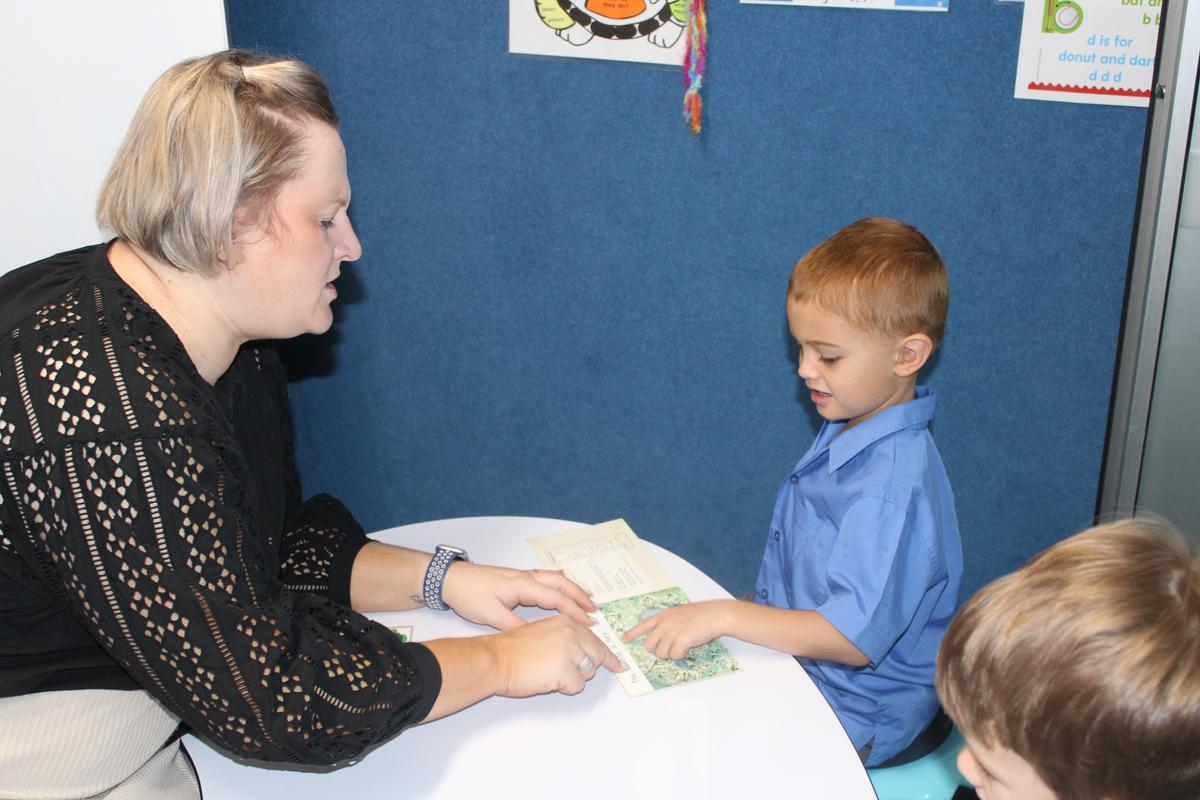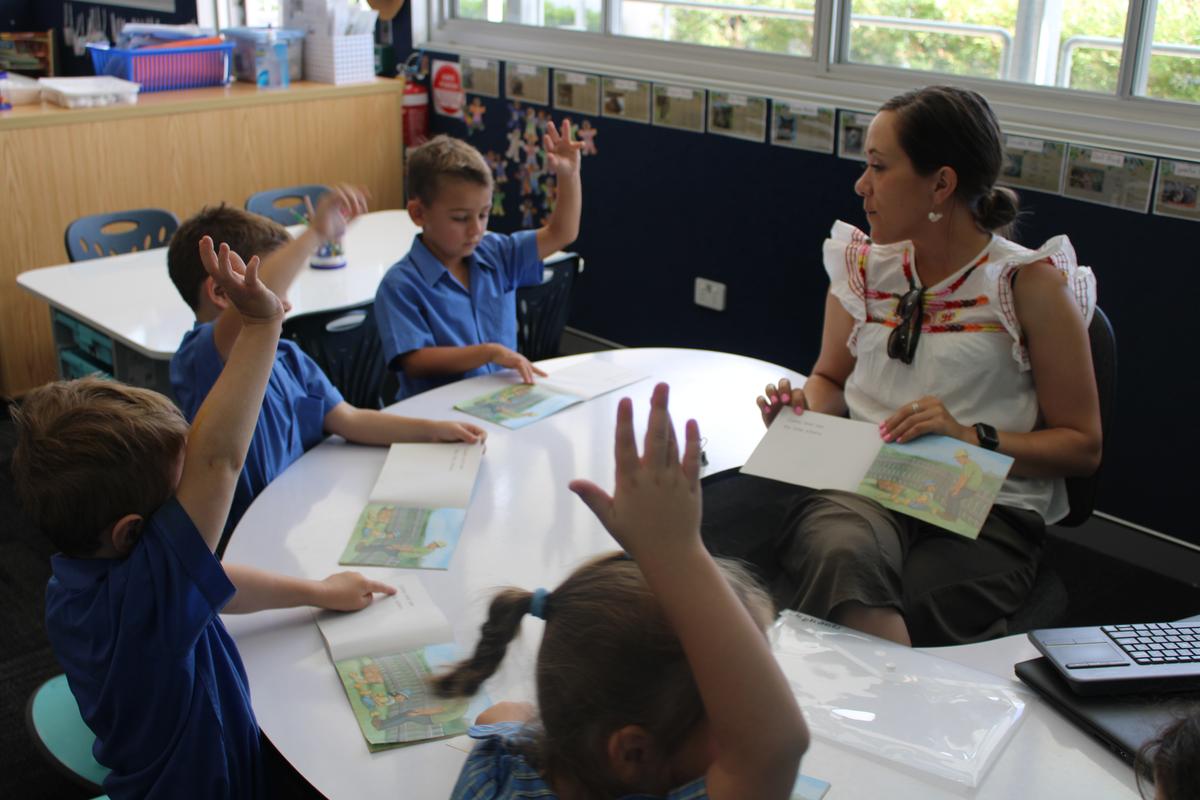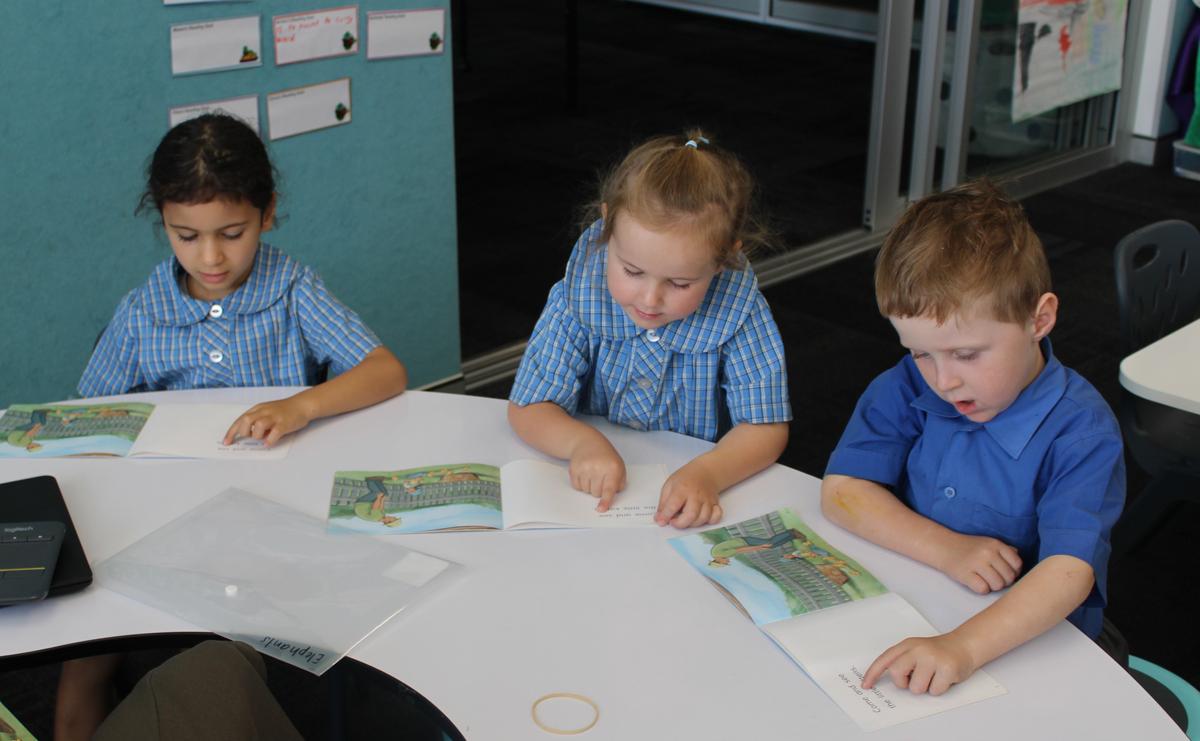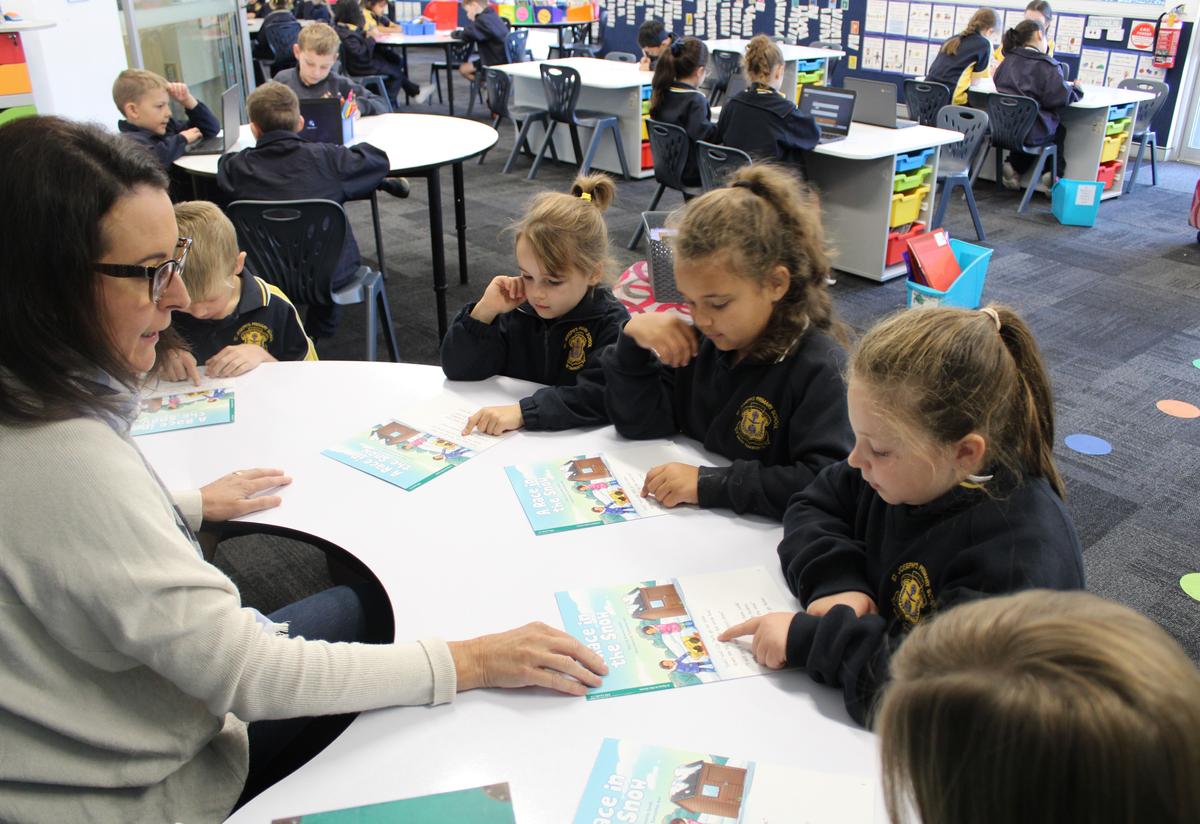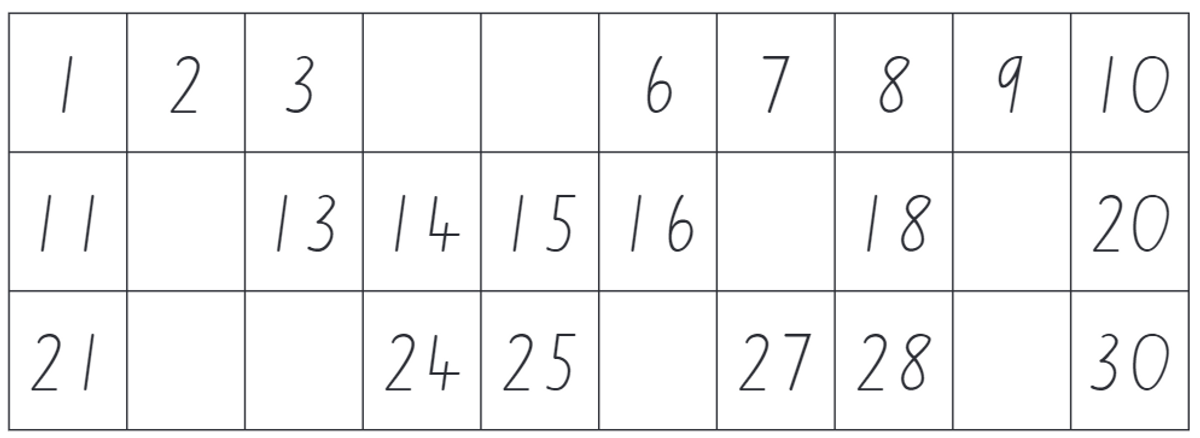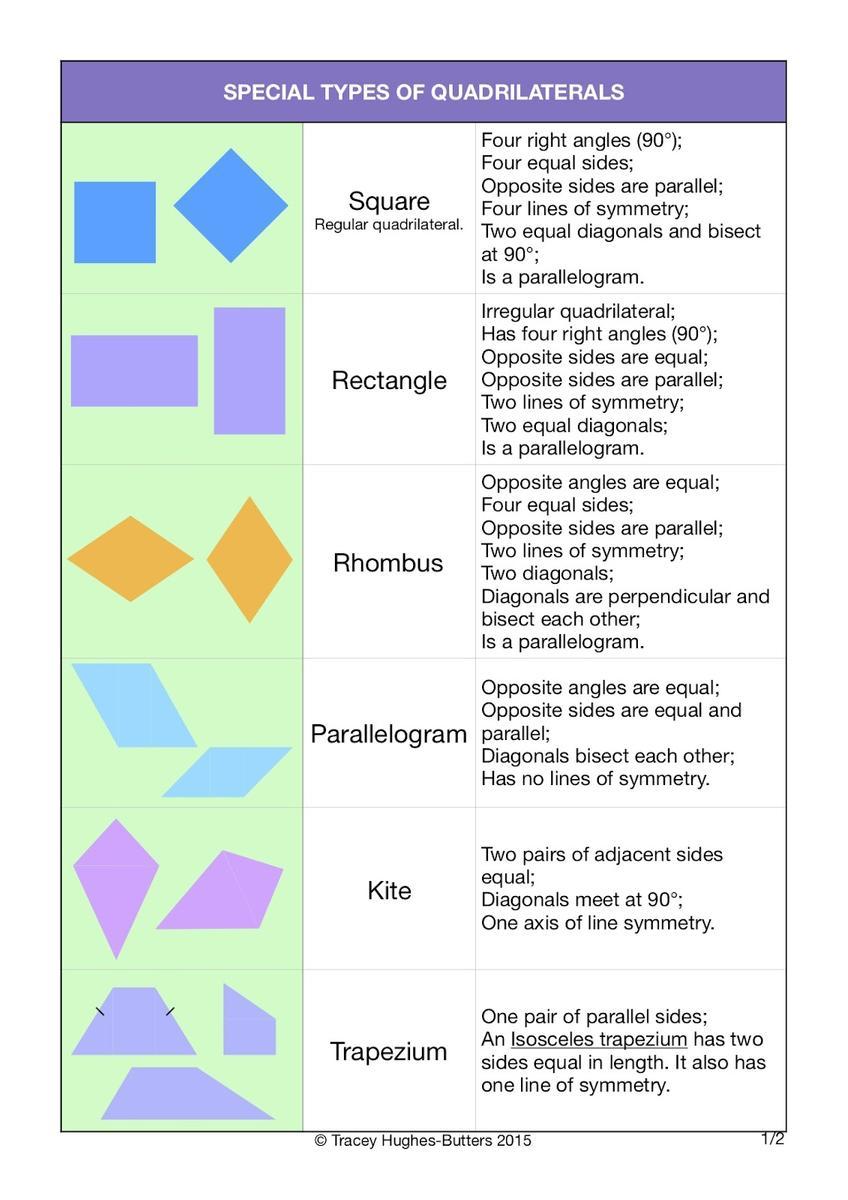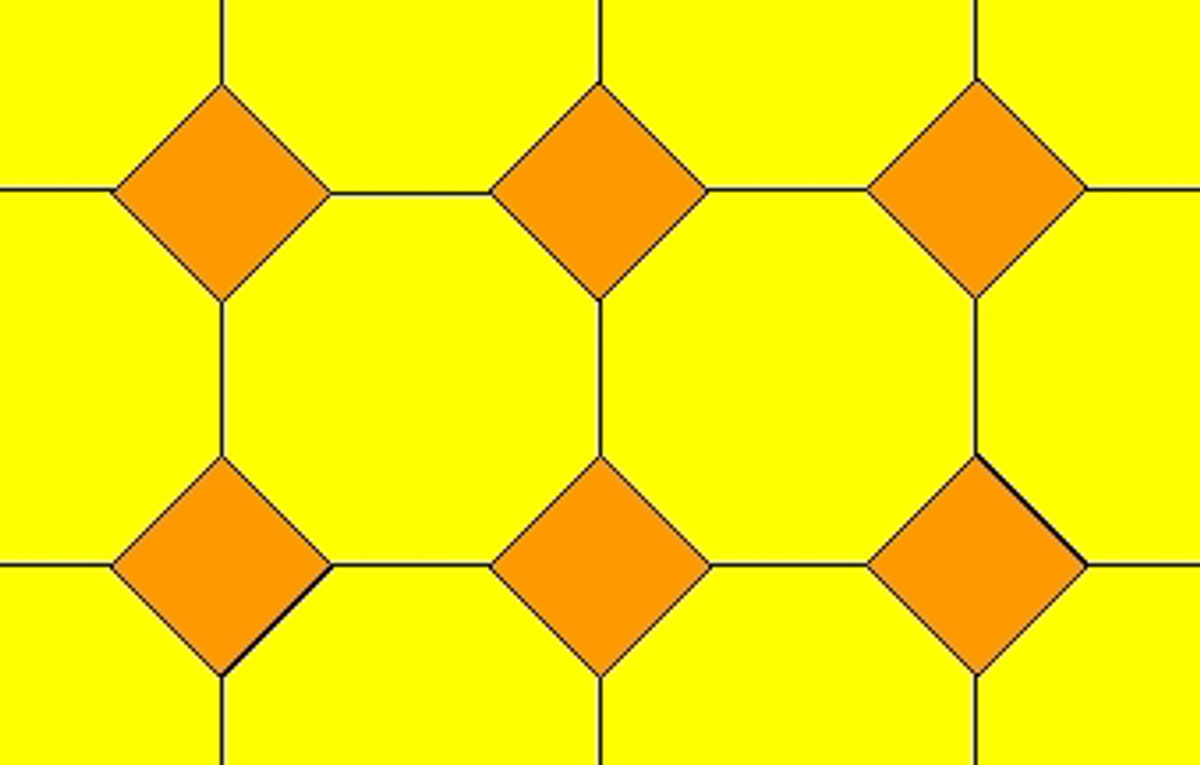The Learning Zone

"Coming together is the beginning, staying together is progress,
and working together is success." - Henry Ford
What is Guided Reading?
Guided Reading is an essential part of the daily English Block across all classes from K-6. It is a time where students work in small instructional groups with the teacher, who supports each reader's development to process carefully selected texts at increasingly challenging levels of difficulty.
The goal of Guided Reading is to build word reading skills, comprehension and fluency. During the daily guided sessions, students are given the opportunity to develop these skills to become independent, strategic readers. Teachers understand the reading behaviours of each child, provide support and give students exactly what they need to move forward.
Armidale Diocesan Mathematics Initiative (MaST)
This term we continue our involvement in the Armidale Diocesan Mathematics Initiative known as the MaST Project. We would like to commend our teachers for their hard work and diligence to ensure this initiative enhances the learning experiences for their students.
Please see the information below to assist your child at home.
Maths At Home:
Kindergarten - Whole Number
Kindergarten continue working on whole number this week before moving onto Area next week. Counting is an important foundation for future number work. What numbers can you recognise, read and say?
Try the link below to assist with your child's counting.
1 to 30 and 30 to 1 | Jack Hartmann Count to 30 | Counting Song
Challenge 1: Count forwards from 1 to 30. Fill in the missing numbers as you count.
Which number comes before 6?
Which number comes after 11?
Point to the number 22 and count forwards to 30.
Point to the number 17 and count forwards to 30.
Which number is one less than 29?
Which number is one more than 23?
Challenge 2: Count forwards from 1 to 50 or beyond.
Stage 1 - Addition
Stage 1 are still working on Addition.
Promote and encourage mental strategies for adding numbers. Adding number facts to 20 is a great way to start. For example: 16 + 4
Other ways to assist your child at home are:
Using number bonds, or ‘friends of 10’, to assist with simple addition and subtraction problems. For example, 4 + 6 = 10, 6 + 4 = 10, 10 - 4 = 6, 10 - 6 = 4
How To Teach Number Bonds? | Maths – No Problem!
Building number bond knowledge to understand ‘friends of 20’. These number pairs are 11 and 9, 12 and 8, 13 and 7, 14 and 6, 15 and 5.
Stage 2 - 2D Shapes
Some 2D language used is - circle, triangle, quadrilateral, parallelogram, rectangle, rhombus, square, trapezium, kite, pentagon, hexagon, octagon, symmetry.
The main way a parent can add to the experience of tessellating shapes is asking gentle questions along the way. Prompts such as:
"I notice that you're making a pattern.
What can you tell me about your pattern?"
are helpful in getting children to describe their thinking.
Stage 3 - Angles
Stage 3 are working on Angles this week.
Classification of Angles using this poster:
Have a great week of learning and fun!
Maree Holland & Greg O'Toole

